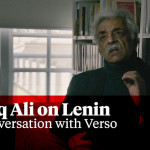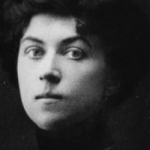Tariq Ali's Blog, page 2
May 25, 2017
The Need for Revolution
April 27, 2017
Capitalism and Democracy: Interview with Wolfgang Streeck
April 13, 2017
Top 10 books about the Russian Revolution
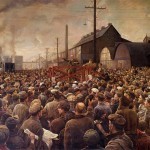 A hundred years after the Russian Revolution, history, according to most historians, had pronounced its judgment. October 1917 had been relegated to a past that would never be repeated, just like the tumbrils in Paris in 1793 or Charles I’s public execution outside the palace at Westminster. History doesn’t repeat itself, not even as a farce, but its echoes remain.
A hundred years after the Russian Revolution, history, according to most historians, had pronounced its judgment. October 1917 had been relegated to a past that would never be repeated, just like the tumbrils in Paris in 1793 or Charles I’s public execution outside the palace at Westminster. History doesn’t repeat itself, not even as a farce, but its echoes remain.
What I wanted to do in The Dilemmas of Lenin: Terrorism, War, Empire, Love, Revolution was to place Lenin in proper historical context as an extremely gifted political strategist and thinker who, more than any other historical figure, dominated the shape of the last century. To achieve this meant studying in detail the two streams of political thought – anarcho-terrorism and European social democracy – that Lenin absorbed and transcended to create a new synthesis.
He was neither saint nor totalitarian despot, the two roles assigned to him after his death in 1924. Hidden underneath the chaos and misery created by the horrendous civil war between the Red and White armies, (the latter backed by Britain, the US, France and their allies) there was the thread of reason.
Lenin never lost sight of this thread and in his final years, crippled by a stroke and confined to his study, he returned with vigour to denounce the failures of his own side, and insisted that if the revolution was not regularly renewed it would fail. “A Bolshevik who does not dream is a bad Bolshevik,” he would often repeat. His own dream was a state modelled on the defeated Paris Commune of 1871. This dream was the backdrop to my novel Fear of Mirrors, which I began writing soon after the fall of the Berlin Wall (and has been recently republished by Verso). In the decades that followed, the tragedies of the Revolution never completely left my mind, for October 1917 had been a formative event for my generation and its ghosts stalked the streets of Paris, Saigon and Prague in 1968.
Rereading the histories of 1917 and Lenin’s own writings without instrumentalist intent, brought back many memories and moments of discovery. Of the four works I consider indispensable, two were written by Russians and two by North Americans. All of the following works are helpful in broadening one’s understanding.
To view the full list of books at the Guardian website, click here.
April 3, 2017
What was Lenin Thinking?
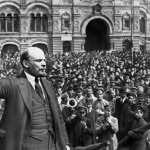 What was Vladimir Lenin thinking on the long journey to Petrograd’s Finland Station in 1917?
What was Vladimir Lenin thinking on the long journey to Petrograd’s Finland Station in 1917?
Like everyone else, he had been taken by surprise at the speed with which the February Revolution had succeeded. As he traveled from Zurich across Europe to Russia, on board a sealed train courtesy of Germany’s kaiser, he must have reflected that this was an opportunity not to be missed.
That the weak liberal parties dominated the new government was to be expected. What worried him were the reports he was receiving that his own Bolsheviks were vacillating over the way forward. Theory had bound them, together with most of the left, to the Marxist orthodoxy that, at this stage, the revolution in Russia could be only bourgeois-democratic. Socialism was possible only in advanced economies like Germany, France or even the United States, but not in peasant Russia. (Leon Trotsky and his band of intellectuals were among the few dissenters from that view.)
Since the course of the revolution was thus preordained, all that socialists could do was offer support to the provisional government as it carried through the revolution’s first phase and developed a full-fledged capitalist society. Once this was completed, then they could agitate for a more radical revolution.
This combination of dogmatism and passivity infuriated Lenin. The February upheaval had forced him to rethink old dogmas. To move forward, he now believed, there had to be a socialist revolution. No other solution was possible. The czarist state had to be destroyed, root and branch. So he said as he stepped off the train in Petrograd: No compromise was possible with a government that continued to prosecute the war or with the parties that supported such a government.
The Bolshevik slogan that embodied his tactical thinking was “peace, land and bread.” As for the revolution, he now argued that the international capitalist chain would break at its weakest link. Winning over the Russian workers and peasants to create a new socialist state would pave the way for an insurrection in Germany and elsewhere. Without this, he argued, it would be difficult to build any meaningful form of socialism in Russia.
He detailed this new approach in his “April Theses,” but had to fight hard to persuade the Bolshevik party. Denounced by some for turning his back on accepted Marxist doctrine, Lenin would quote Mephistopheles from Goethe’s “Faust”: “Theory, my friend, is gray, but green is the eternal tree of life.” An early supporter was the feminist Alexandra Kollontai. She, too, rejected compromise because, she believed, none was possible.
From February to October, arguably the most open period in Russian history, Lenin won over his party, joined forces with Trotsky and prepared for a new revolution. The provisional government of Alexander Kerensky refused to withdraw from the war. Bolshevik agitators among the troops at the front assailed his vacillations. Large-scale mutinies and desertions followed.
Within the workers’ and soldiers’ councils, or soviets, Lenin’s strategy began to make sense to large numbers of workers. The Bolsheviks won majorities in the Petrograd and Moscow soviets, and the party was developing rapidly elsewhere. This merger between Lenin’s political ideas and a growing class consciousness among workers produced the formula for October.
March 29, 2017
How Lenin’s love of literature shaped the Russian Revolution
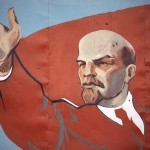 Literature shaped the political culture of the Russia in which Vladimir Ilyich Lenin grew up. Explicitly political texts were difficult to publish under the tsarist regime. The rasher essayists were holed up in asylums until they “recovered”: in other words, until they publicly recanted their views. Novels and poetry, meanwhile, were treated more leniently – though not in every instance.
Literature shaped the political culture of the Russia in which Vladimir Ilyich Lenin grew up. Explicitly political texts were difficult to publish under the tsarist regime. The rasher essayists were holed up in asylums until they “recovered”: in other words, until they publicly recanted their views. Novels and poetry, meanwhile, were treated more leniently – though not in every instance.
The chief censor was, of course, the tsar. In the case of Pushkin, the “father of the people”, Nicholas I, insisted on reading many of his verses before they went to the printer. Some, as a result, were forbidden, others delayed, and the most subversive were destroyed by the frightened poet himself, fearful that his house might be raided. We will never know what the burnt verses of Eugene Onegincontained.
Nonetheless, politics by other means and in a variety of different registers permeated Russian fiction in a manner without parallel in any other European country. As far as politicised literature and literary criticism went, the Russian intelligentsia were spoilt for choice. They devoured the acrimonious conflict between the powerful critic Vissarion Belinsky and the dramatist and novelist Nikolai Gogol, whose cutting 1842 satire Dead Souls had invigorated the country and been read aloud to the illiterate.
Success, however, proved to be Gogol’s undoing. In a subsequent work, he recanted, writing of stench-ridden peasants and defending illiteracy. In the preface to the second edition of Dead Souls, he wrote: “Much in this book has been written wrongly, not as things are really happening in the land of Russia. I ask you, dear reader, to correct me. Do not spurn this matter. I ask you to do it.”
Angered, Belinsky broke publicly with him in 1847. Belinsky’s widely circulated “Letter to Gogol” gave the recipient a long, sleepless night:
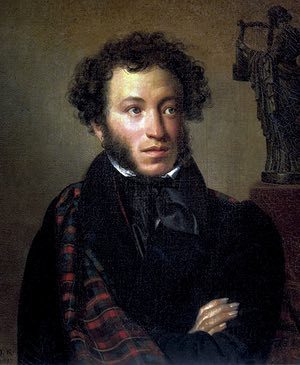
I know the Russian public a little. Your book alarmed me by the possibility of its exercising a bad influence on the government and the censorship, but not on the public. When it was rumoured in St Petersburg that the government intended to publish your book [ Selected Passages from Correspondence With Friends] in many thousands of copies and to sell it at an extremely low price, my friends grew despondent; but I told them then and there that the book, despite everything, would have no success and that it would soon be forgotten. In fact it is now better remembered for the articles that have been written about it than for the book itself. Yes, the Russian has a deep, though still undeveloped, instinct for truth.
In later years, critics became much more vicious, lambasting novelists and playwrights whose work they considered to be insufficiently empowering.
This, then, was the intellectual atmosphere in which Lenin came of age. His father, a highly cultured conservative, was the chief inspector of schools in his region and much respected as an educationalist. At home, Shakespeare, Goethe and Pushkin, among others, were read aloud on Sunday afternoons. It was impossible for the Ulyanov family – “Lenin” was a pseudonym adopted to outwit the tsarist secret police – to escape high culture.
At high school, Lenin fell in love with Latin. His headteacher had high hopes that he might become a philologist and Latin scholar. History willed otherwise, but Lenin’s passion for Latin, and taste for the classics, never left him. He read Virgil, Ovid, Horace and Juvenal in the original, as well as Roman senatorial orations. He devoured Goethe during his two decades in exile, reading and rereading Faust many times.
Lenin put his knowledge of the classics to good use in the time leading up to the October revolution of 1917. In April of that year, he broke with Russian social-democratic orthodoxy and, in a set of radical theses, called for a socialist revolution in Russia. A number of his own close comrades denounced him. In a sharp riposte, Lenin quoted Mephistopheles from Goethe’s masterwork: “Theory, my friend, is grey, but green is the eternal tree of life.”
March 13, 2017
The Octobrist Women – Extract from The Dilemmas of Lenin
Women played a major part in both of the revolutions of 1917, and to a much greater extent than they had in 1905. The February uprising was, in fact, triggered by the strike of women in the textile industry in their dual roles as workers and, in many cases, the wives of soldiers at the front. They sent appeals to the metal workers to join them and, by the end of the day, over 50,000 workers were marching in the streets of the capital. They were joined by housewives marching to the Duma demanding bread. It was International Women’s Day (8 March by the Gregorian calendar), that the Bolshevik activist Konkordia Samoilova had made known to Russians in 1913 and that had been celebrated, observed and marked from that year onwards. It was usually a smallish public event in a few cities. Celebrating it with a mass strike led by women workers was unprecedented. There was a special irony involved: Russia’s capitalists had assumed that since women were the most oppressed, docile and socially backward (in the sense that unlike the terrorist women of previous decades, a large majority were illiterate) group in Russian society, they would, according to capitalist logic, make the most obedient and trouble-free members of the workforce. This was a miscalculation. As the First World War continued, so did the need for more labour. The percentage of women in the factories doubled and trebled. The Putilov arms industry was also producing the most militant workers and Bolshevik organisers, female and male.
In Moscow, too, women workers were becoming radicalised. One of them, Anna Litveiko, eighteen years old in 1917, later the question of women described the process in a brief memoir. She and two friends roughly the same age were working in the Elektrolampa factory in Moscow’s industrial belt. She recalled her father returning home in 1905 from the last barricade left in the city ‘all beaten up, his clothes torn and his pockets full of cartridges’. This time it was different. Many soldiers and Cossacks were on their side. In October, choices had to be made. Which side were they on? Menshevik or Bolshevik? Anna admired the two Bolshevik organisers who worked with her. In this factory the Mensheviks sent intellectuals to address them from the outside, ‘but then I was told that it was often the other way round – Mensheviks were the workers and Bolsheviks the intellectuals. How could I figure it out?’
One day she waited for one of the Bolsheviks and asked: ‘What is the difference between the Bolsheviks and Mensheviks?’ He replied:
You see, the tsar has been kicked out, but the burzhuis [bourgeois] have stayed and grabbed all the power. The Bolsheviks are the ones who want to fight the burzhuis to the end. The Mensheviks are neither one thing nor the other.
Anna decided that ‘if it was to the end, then I was going to sign up with the Bolsheviks.’ Her two friends soon followed suit.
None of the participants or the leaders of the clandestine political parties embedded in the capital had any idea that it was the first day of a revolution, except for the women office workers overheard by Sukhanov soon after he arrived at work that morning. The women came out the next day as well and this time, so did the men. And the parties of the left were now wide awake, writing, printing and distributing leaflets, most of which were similar in tone except for those of the Bolsheviks, who also demanded peace and an immediate end to the imperialist war. By that weekend the soft breeze had turned into a storm. Sukhanov, now out on the streets taking notes and savouring the situation, overheard two unsympathetic bystanders. ‘What do they want?’ said one grim-looking fellow. Back came the reply from his lookalike: ‘They want bread, peace with the Germans, and equality for the Yids.’ ‘Bull’s-eye,’ thought the future historian, expressing his delight at this ‘brilliant formulation of the programme of the great revolution’.
There were only two women members of the Bolshevik Central Committee in 1917: Alexandra Kollontai and Elena Stasova. Varvara Yakovleva joined a year later and was minister for education in 1922, later becoming minister for finance. The Mensheviks were not much better. The numerical contrast with the terrorist People’s Will could not have been more striking, but even their successor, the Social Revolutionary (SR) Party, showed how much had changed in the new century. The proportion of women in their leading bodies, too, had registered a very sharp decline, though marginally less so in their secret terrorist wing, the Combat organisation.
The reasons for this were varied. Women workers were being recruited in huge numbers to the industrial combines. A political comparison is equally revealing. Those men and women from the old groups who wanted to maintain their allegiances in different times might have joined the SRs. The majority of them now appeared in public without the mask of terrorism.
Alexandra Kollontai was not the only woman to play an important role in the early Soviet Union, but she was undoubtedly one of the more gifted, and possessed a fiercely independent mind and spirit. It is in her work that we can see the synthesis of revolutionary (socialist, not radical) feminism. She understood better than most the social, political and sexual needs of women’s liberation. She could be harsh sometimes in her estimates of women from different class backgrounds, but these views were not shared by many of her comrades, male or female. She was deliberately misinterpreted and painted as a defender of permanent libertinage; in the countryside small landlords used her name to warn poor peasants that if they went along with the plan for collective farming they would have to share the younger women of their families with all other men, while the older women would be reduced to soap.
Kollontai was only too aware of the absurd nature of most of the propaganda and became especially irritated when accused of prioritising sex above love. In her short autobiographical essay ‘The Autobiography of a Sexually Emancipated Communist Woman’, she explained that love had always played a large part in her life, but that it was a transient experience. More important was the need to ‘understand that love was not the main goal of our life and that we knew how to place work at its centre’. She could have added, ‘. . . like men do’. She wanted love to be harmoniously combined with work, but ‘over and over again, things turned out differently, since the man always tried to impose his ego on us and adapt us fully to his purposes.’ The choice was either to accept this position for the sake of life or, by opposing, end it. She explained that since ‘love had become a fetter’, the only way out was through ‘an inevitable inner rebellion . . . We felt enslaved and tried to loosen the love-bond.’ She claimed not that there was an absence of contradictions in the rush ‘toward freedom’, but the contrary: ‘We were again alone, unhappy, lonesome, but free – free to pursue our beloved chosen ideal work.’ It was one of the early core statements of modern feminist values, and one from which the twenty-first century has retreated, despite endless hosannas honouring ‘gay marriage’.
Lenin wrote in 1918 that ‘from the experience of all liberation movements, it can be noted that the success of a revolution can be measured by the extent of the involvement of women in it.’ Virtually all Russian revolutionaries, regardless of faction or party, had always agreed on this. As I discussed in Chapter 12, from the 1860s onwards Russian women played an exemplary role, much more advanced than their sisters in the rest of Europe and on all other continents.
Debates on the role of the nuclear family in town and country and on the function of marriage were more advanced and real in Russia than anywhere else during the late nineteenth and early twentieth centuries. The 1917 revolutions further accelerated this process, since these issues were now no longer abstractions. Concrete measures needed to be taken. Marx, Engels and Bebel had all insisted that capitalism was negating the traditional uses and needs of the family. In peasant societies the family acted as a collective unit of production. Everyone worked, though women did so harder. Clara Zetkin, a leader of the German SPD, using the work of the three elders as a starting point, analysed the differences between a peasant and a proletarian family. The latter, she argued, was a unit of consumption, not production. This was taken further by Soviet theorists after the revolution. For Nikolai Bukharin, the development of capitalism had sown all the seeds necessary for the disintegration of the family: the unit of production shifting to the factory, waged labour for women as well as men and, of course, the peripatetic nature of city life and work. Kollontai agreed that the family was on the edge of extinction. What was crucial for the Bolshevik government was to make the transition to new forms as painless as possible, with the state providing high-quality nurseries, schools, communal eating facilities and help with housework. Lenin strongly supported this point of view. His strictures on the family were characteristically acerbic. He denounced ‘the decay, putrescence, and filth of bourgeois marriage with its difficult dissolution, its license for the husband and bondage for the wife, and its disgustingly false sex morality and relations’.
The enemy was always the male partner, who avoided housework and childcare altogether. ‘Petty housework’, Lenin raged in 1919, ‘crushes, strangles, stultifies and degrades, chains her to the kitchen and the nursery, and she wastes her labour on barbarously unproductive, petty, nerve-racking, stultifying and crushing drudgery.’ His solutions were the same as those of other revolutionary leaders at the time: collective kitchens, laundries, repair shops, crèches, kindergartens and so forth. But for Lenin, the abolition of domestic slavery did not mean the disappearance of individual households or families.
These views were reflected in the architecture of the Constructivists. Moisei Ginzburg’s apartment buildings, both large and small, expressed the new epoch. The communal laundries and dining rooms were considered a huge success. The playground for children was visible from every apartment kitchen, and the size of the space could be modified by moving huge hardwood walls on wheels. Ginzburg’s vision was, as he explains in his masterwork Epoch and Style, greatly inspired by his five years in the Crimea where he had time, despite the civil war, to visit old mosques and other buildings from which he learnt much more than he had ever done in the classical academy in Milan. He described the spontaneous, impulsive architecture of the Tatar people as ‘rushing along a natural course, following its bends and irregularities, adding one motif to another with a picturesque spontaneity that conceals a distinct creative order’. The Pravda building in Leningrad, constructed in 1924, on which he happily worked with two other architects, established his reputation as one of the finest exponents of the new culture. His work was soon eclipsed by the time-servers of the Stalin epoch, but mercifully Ginzburg was left alone. He died comfortably in bed in 1946.
The Bolsheviks were extremely proud of their first decrees, most of which were drafted by Lenin. To mark the first anniversary of the revolution in October 1918, the Central Executive Committee of the Soviet unanimously endorsed the new Code on Marriage, the Family and Guardianship. It was drafted by the radical jurist Alexander Goikhbarg, thirty-four years old at the time, who explained that its aim was to propel the ‘withering away’ of the traditional family. ‘Proletarian power’, he wrote, at a time when hopes such as his were fairly common, ‘constructs its codes and all its laws dialectically, so that every day of their existence undermines the need for their existence.’ The aim was a law to ‘make law superfluous’. Goikhbarg, a former Menshevik, was basing his ideas on the political philosophy that underlay Lenin’s State and Revolution. A number of historians have remarked that during the first year of the revolution, it seemed as if the Paris Commune were being rerun.
The new family law was without precedent in history. Tsarist family laws were framed by the needs of the Orthodox Church and other religions when necessary. A comparison with contemporary Saudi Arabia and Wahhabi prescriptions is instructive.
The factories had long disappeared but a medium-sized apartment block for working-class families was still in place. It was truly amazing. A communal laundry was functioning. I was shown a typical apartment. All kitchens had windows from where the children’s playground was permanently visible. The hardwood walls on wheels varied the layout according to need. I couldn’t help comparing this Jerusalem, with its green space, to most of the brutalist housing blocks in postwar Britain. The lack of imagination in Britain was shocking. Epochs and styles.
Patriarchal brutality was enforced by the Church with the same vigour. Women needed the permission of men for virtually everything, including a passport. Total obedience was enforced and women had no rights except with regard to property. Western European family laws originating in feudalism proper had instituted ‘joint’ property, which effectively meant male ownership and domination. The Russian church permitted separate property rights as far as dowries, inheritance, gifts and land were concerned. This is also the case in Saudi Arabia. Women are denied political rights and equality but can own property; businesswomen function perfectly well.
A few months after October 1917, a decree abolished all tsarist laws concerning the family and the criminalisation of sodomy. Women were no longer legally inferior, they had equal rights with men; the religious marriage was invalid and only civil marriages were recognised by law; divorce was to be granted when requested by either partner, and no grounds were considered necessary. Likewise alimony: the same guarantees for both partners. The property laws stretching back centuries were abolished, ending male privileges and removing the stigma of illegitimacy. All children were entitled to equal rights, regardless of parental wedlock. This constituted a radical restructuring of European law by unlinking family obligations from the marriage contract or certificate. Interestingly, private adoptions were disallowed on the grounds that the new state would be a better parent than individual families. Given the preponderance of the peasantry, it was feared that they would facilitate the use of child labour in the countryside. More utopian educators argued that abolishing private adoption was a transitional step towards the state providing childcare for all.
Critics of the new code denounced the measures as a capitulation to bourgeois norms. Goikhbarg wrote, ‘They screamed at us: “Registration of marriage, formal marriage, what kind of socialism is this?” ’ And N. A. Roslavets, a female Ukrainian delegate to the 1918 Central Executive Committee of the Soviet where the new code was being discussed, was livid at the state having anything to do with marriage at all. It was an individual decision and should be left at that. She denounced the code as ‘a bourgeois survival’: ‘the interference of the state in the business of marriage, even in the form of registration which the Code suggests, is completely incomprehensible, not only in a socialist system, but in the transition’, and concluded angrily, ‘I cannot understand why this Code establishes compulsory monogamy.’ In response Goikhbarg pleaded that she and others must understand that the main reason for having a desacralised code was to provide people who did wish to register a marriage with an alternative to the Church. If the state did not do this, many people, especially in the countryside, would have clandestine church weddings. He won the argument, but after considerable debate.6
Meanwhile, in 1919, the revolutionary government set up Zhenotdel (the Department for Work among Women Workers and Peasants), whose aim was the emancipation of women. Its leadership consisted of women who had been active in this field during the crucial prerevolutionary years – Inessa Armand, Alexandra Kollontai, Sofia Smidovich, Konkordia Samoilovna and Klavdiya Nikolaeva – and understood the special needs of women. This women’s liberation was not a goal for the majority of women. Social Democrats and both Vera Zasulich and Rosa Luxemburg regarded it as a diversion at a time when humanity as a whole confronted gigantic tasks. The Zhenotdel women did not see themselves as utopians. They simply believed that women’s emancipation was one of the tasks that confronted the revolution. None of them thought it could be achieved quickly or even in their lifetimes, but a start had to be made now or the issue would simply fade to the background. And immediate action needed to be taken regarding the transfer of household chores and childcare to state institutions. By this they did not mean huge phalansteries, as visualised by Fourier, Chernyshevsky and Bukharin. The women wanted city administrations to provide local institutions, such as free daycare centres, public dining rooms and laundries. This became the subject of a heated debate. Addressing a women’s conference in September that year, Lenin argued that Zhenotdel’s demands and work ‘cannot show any rapid results … and will not produce a scintillating effect.’ Trotsky argued the same in several newspaper articles, citing many examples from working-class life that suggested that caution was necessary, while also defending the idea that abstract propaganda was not enough to transform gender relations. There had to be some deeds, some experiments to show the advantages to all concerned.
In reality it was, alas, the old Bolsheviks (men and women) who turned out to be the utopians. The abolition of private ownership was not enough. The victory of conservatism in the Soviet Union after 1930 led to a ‘sexual Thermidor’ and the reassertion of ‘traditional’ women’s roles even without changing the laws, except to re-criminalise homosexuality in 1934. In polar contrast, the practical ideas put forward by Zhenotdel were implemented after the end of the civil war by architects designing new housing estates for workers, as explained above.
On a national level Zhenotdel members were extremely active in ensuring that women were not passed over when it came to serving on military revolutionary committees, local party and trade union apparatuses and the political department of the Red Army. Again, the involvement of Russian women in partisan wars and underground terrorism served as an example. Peasant women in 1812 had often dispatched the French soldiers who had been cut off from Napoleon’s army using scythes or pitchforks, or simply by burning them alive.
During the civil war many women served as political commissars and nurses in the field hospitals. Partisan life was rough, but women liked the equality they enjoyed with the men, a tradition that would be highlighted once again during the Second World War. Richard Stites describes how ‘captured nurses were often treated with special brutality by the Whites. Near Petrograd in 1919, three nurses were hanged in bandages from the beams of their field hospital with their Komsomol [Young Communist] pins stuck through their tongues.’ And thousands of women served in the Red Army and ‘fought on every front and with every weapon, serving as riflewomen, armoured train commanders, gunners’. They also became spies. Lenin was extremely impressed by reports from Odessa and Baku that the more educated Red Army women had effectively confronted French and British soldiers fighting alongside the Whites and argued in the soldier’s own languages against foreign interventionism. He ordered the creation of a special school for espionage and disorganisation. This was situated in a large Moscow house under the command of the legendary Georgian revolutionary Kamo, whose exploits in the anti-tsarist underground were legion. Those who passed through the school (many of whom were women, including the gifted Larissa Reisner) formed the First Partisan Special Purpose Detachment.
It was on other emancipatory fronts that the Bolshevik feminists encountered serious resistance. There were huge problems when they set up modest headquarters in the Caucasus and Central Asia or, for that matter, in the Ukraine. Local women were frightened and shy. The men threatened the feminists with violence, even if their wives were simply being taught to read in one of the Zhenotdel ‘reading cabins’.
After a trip to the Caucasus in 1920, Clara Zetkin reported to Zhenotdel headquarters what women had told her after weeks spent convincing them to speak:
We were silent slaves. We had to hide in our rooms and cringe before our husbands, who were our lords.Our fathers sold us at the age of ten, even younger. Our husband would beat us with a stick and whip us when he felt like it. If he wanted to freeze us, we froze. Our daughters, a joy to us and a help around the house, he sold, just as we had been sold.
The work done by lower-echelon Zhenotdel women throughout the country undoubtedly bore fruit. It laid the foundations for imposing a strict system of gender equality in even the most socially backward regions of the young Soviet Union. These courageous and self-confident women confronted the men head-on without any weapons or guards. Three Zhenotdel cadres were killed ‘by bandits’. In the heart of a Muslim city, they showed a film depicting a Muslim heroine who refused to wed an old man who had bought her. In Baku, women coming out of a Zhenotdel club were attacked by men with wild dogs (there was not much difference between the two) and defaced with boiling water. A twenty-year-old Muslim woman, proud that she had liberated herself, went to bathe in a swimsuit. She was sliced to pieces by her father and brothers because it ‘insulted their dignity’. There were 300 similar murders (‘counterrevolutionary offences’, as far as the state was concerned) over three months in 1929 alone. But despite patriarchal terror, the women won in the end. Hundreds of Muslim and other women in these regions began to volunteer as translators and office workers in the Zhenotdel offices. And there are extremely affecting reports of how on every May Day and International Women’s Day, thousands of women would voluntarily and insolently cast off their veils. Nor did they ever look back. Self-emancipation was the model suggested by Zhenotdel, not state imposition. And it happened.
A number of leading Bolsheviks had been opposed to Zhenotdel. Rykov, heavily engaged with the predominantly male trade unions, demanded that Zhenotdel be disbanded because it was divisive. Zinoviev opposed even summoning the Women’s Congress of 1919. Others wanted to use it as a way of sidelining Bolshevik women and leaving the ‘real’ party to the men, which was more or less the case anyway. Elena Stasova, the party secretary in October 1917, was removed from her position when the capital moved to Moscow. She was angry (even though her successor Jacob Sverdlov was the most gifted organiser available) and refused to be shunted to Zhenotdel, becoming one of the political secretaries in Lenin’s office. Lenin himself vigorously defended Zhenotdel against all forms of reductionism. In what was probably his last interview on the subject (his interlocutor was Clara Zetkin), he responded angrily when she informed him that many ‘good comrades’ were hostile to any notion of the party creating special bodies for ‘systematic work among women’. They argued that everyone needed to be emancipated, not just women, and that Lenin had surrendered to opportunism on this question. Zetkin writes:
‘That is neither new nor proof,’ said Lenin. ‘You must not be misled by that. Why have we never had as many women as men in the party – not at any time in Soviet Russia? Why is the number of women organised in trade unions so small? Facts give food for thought . . . That is why it is right for us to put forward demands favourable to women . . . Our demands are practical conclusions which we have drawn from the burning needs, the shameful humiliation of women in bourgeois society, defenceless and without rights . . . We recognise these needs and are sensible to the humiliation of women, the privileges of the man. That we hate, yes, hate everything, and will abolish everything which tortures and oppresses the woman worker, the housewife, the peasant woman, the wife of the petty trader, yes, and in many cases the women from the possessing classes.’
November 29, 2016
Fidel Castro 1926-2016
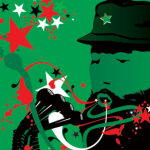 On 26 July 1953 an angry young lawyer, Fidel Castro, led a small band of armed men in an attempt to seize the Moncada barracks in Santiago de Cuba, in Oriente province. Most of the guerrillas were killed. Castro was tried and defended himself with a masterly speech replete with classical references and quotations from Balzac and Rousseau, that ended with the words: ‘Condemn me. It does not matter. History will absolve me.’ It won him both notoriety and popularity.
On 26 July 1953 an angry young lawyer, Fidel Castro, led a small band of armed men in an attempt to seize the Moncada barracks in Santiago de Cuba, in Oriente province. Most of the guerrillas were killed. Castro was tried and defended himself with a masterly speech replete with classical references and quotations from Balzac and Rousseau, that ended with the words: ‘Condemn me. It does not matter. History will absolve me.’ It won him both notoriety and popularity.
Released in an amnesty in 1954, Castro left the island and began to organize a rebellion in Mexico. For a time he stayed in the hacienda that had once belonged to the legendary Mexican revolutionary Emiliano Zapata. In late November 1956 eighty-two people including Fidel Castro and Che Guevara set sail from Mexico in a tiny vessel, the Granma, and headed for the impenetrable, forested hills of the Sierra Maestra in Oriente province. Ambushed by Batista’s men after they landed, twelve survivors reached the Sierra Maestra and began the guerrilla war. They were backed by a strong urban network of students, workers and public employees who became the backbone of the 26 July Movement. In 1958 the guerrilla armies began to move from the mountains to the plains: a column led by Fidel began to take towns in Oriente, while Che Guevara’s irregulars stormed and took the central Cuban city of Santa Clara. The day after, Batista and his Mafia chums fled the island as the Rebel Army, now greeted as liberators, marched across the island into Havana. The popularity of the Revolution was there for all to see. Castro’s victory stunned the Americas. It soon became obvious that this was no ordinary event. Any doubts as to the Revolution’s intentions were dispelled by the First Declaration of Havana, Castro’s declaration of total Independence from the US made in public before a million people in Revolution Square. Washington reacted angrily and hastily, trying to cordon off the new regime from the rest of the continent. This led to a radical response by the Cuban leadership. It decided to nationalize US-owned industries without compensation. Three months later, on 13 October 1961, the United States severed diplomatic relations; subsequently, it armed Cuban exiles in Florida and launched an invasion of the island near the Bay of Pigs. It was defeated. President Kennedy then imposed a total economic blockade, pushing the Cubans in Moscow’s direction. On 4 February 1962, the Second Declaration of Havana denounced the US presence in South America and called for the liberation of the entire continent. Forty years later Castro explained the necessity for the Declarations:
At the beginning of the Revolution … we made two statements, which we called the First Declaration of Havana and the Second Declaration of Havana. That was during a rally of over a million people in Revolution Square. Through these declarations, we were responding to the plans hatched in the United States against Cuba and against Latin America – because the United States forced every Latin American country to break off relations with Cuba … [These declarations] said that an armed struggle should not be embarked on if there existed legal and constitutional conditions for a peaceful civic struggle. That was our thesis in relation to Latin America …
While they were in the Sierra Maestra, the direction that the revolution would take was still not clear – even to Castro. Until that point, he had never been a socialist, and relations with the official Cuban Communist Party were often tense. It was the reaction of that noisy and powerful neighbour from the north that helped determine the orientation of the Revolution. The results were mixed. Politically, the dependence on the Soviet Union led to the mimicking of Soviet institutions and all that that entailed. Socially the Cuban Revolution created an education system and health service that remain the envy of much of the neo-liberal world. History will be the final judge, but Fidel Castro has already been elevated by a vast number of Latin Americans to the plinth occupied by those great liberators Bolívar, San Martín, Sucre and José Martí.
Tariq Ali
26 November 2016
November 3, 2016
Tariq Ali interview in Belgrade by Srecko Horvat and Maja Pelevic
Brazil PT’s Austerity Gave Elite Ammo for Coup
 In his latest episode of the “Global Empire”, Tariq Ali discusses the causes and consequences of the parliamentary coup against Dilma Rousseff in Brazil.
In his latest episode of the “Global Empire”, Tariq Ali discusses the causes and consequences of the parliamentary coup against Dilma Rousseff in Brazil.What happened in Brazil was people’s anger with the way the Brazilian government under Dilma Rousseff had tried to appease the economic demands by the United States and the massive spending on building stadiums and facilities for the World Cup and Olympic Games, the host of teleSUR’s “the Global Empire” Tariq Ali argued in a new episode.
Ali said the Workers Party and its governments led by Luiz Inácio Lula da Silva and Rousseff made the mistake of sidelining their base, alienating unions and poor people by keeping regressive economic policies that kept social programs available to poorer segments of the country.
After winning her new term in 2014, “a fatal decision was made to reverse the new gold and get rid of the reformist finance minister and she suddenly without warning embarked on austerity measures,” Ali said.
This was a “crazy” decision and resulted in major cuts across the economic system of the country leading to a “full-blown recession,” he added.
The corrupt elite and the PT’s conservative allies at the time then used the economic crisis to launch their impeachment process, Ali argued, by accusing Rousseff’s government of being corrupt for moving state money from one public institution to another, a practice that every government in Brazil and elsewhere in the world uses and implements.
Legal experts and lawyers have repeatedly said that such a practice by the Brazilian government was in no way grounds for impeaching the president as it did not constitute criminal practice.
Calling it a constitutional coup, Ali highlighted the U.S.’s role in the action against Dilma by pointing to a WikiLeaks cable showing that current President Michel Temer worked as an informant for U.S. intelligence in 2006.
“We can probably say with some confidence that what happened in Brazil today happened with the knowledge and the agreement and the approval of the American embassy.”
The Dilemmas of Lenin: Terrorism, War, Empire, Love, Revolution
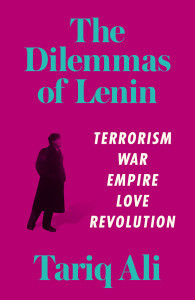
Published: 4th April 2017 by Verso.
On the centenary of the Russian Revolution, Tariq Ali paints an illuminating portrait of Lenin
At the end of his life, Lenin wrote ‘we didn’t know everything’, acknowledging the dilemmas he faced on the road to revolution in 1917 and beyond. In this unusual exploration of the crises that Lenin overcame, the decisions he made, and actions that he took, Tariq Ali reveals an insightful political portrait of this most exemplary leader. From the first stirrings of revolutionary fervour, Lenin sought the right answer to a series of dilemmas that he faced and that still resonate with us today: Is terrorism ever a useful tactic? Can imperial wars ever be supported? What sort of political party do we need? What is the moral justification for seizing power? How does one overcome the burden of history? What role does friendship or love play in revolution? How do you establish a legacy that lasts?Ali reveals that no other modern thinker than Lenin has better understood, nor more clearly articulated, the need to change the world. But do Lenin’s ideas, as expressed in his actions and his political writings, still have any significance for us? In this centenary year of the Russian Revolution, this book raises important questions related to political representation and the popular institutions necessary to challenge capitalism today.
Tariq Ali's Blog
- Tariq Ali's profile
- 798 followers


